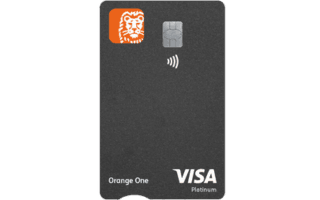Digital Tools for Long-Term Financial Planning

The Role of Digital Tools in Financial Planning
In an increasingly complex financial landscape, leveraging digital tools has become essential for effective long-term financial planning. These tools facilitate easier management of finances and empower individuals to make informed decisions about their future. By utilizing technology, one can navigate investments, savings, and overall financial health with greater precision. The continuous evolution of digital financial tools has transformed the way Australians approach their personal finances, enabling them to manage their money more reliably and efficiently.
One of the most significant advantages of using digital tools is accessibility. With personal finance applications and tools available on mobile devices, users can access their financial information anytime and anywhere. This capability is particularly beneficial during moments that require immediate financial decision-making, such as evaluating an investment opportunity or responding to unexpected expenses. The convenience of having critical financial information at one’s fingertips fosters better decision-making and situational awareness.
Another key component of digital financial planning is automation. Tools that facilitate features such as automatic contributions to savings or investment accounts encourage users to maintain consistent financial habits. For example, Australians can set up regular transfers from their checking accounts to high-interest savings accounts or investment portfolios, ensuring that saving becomes a part of their monthly routine without requiring active management. This consistency can lead to significant financial growth over time, as even small, regular contributions compound interest and accumulate wealth.
Moreover, the power of data analytics should not be underestimated. Digital financial tools can provide users with comprehensive data analysis to enhance budgeting, forecasting, and investment strategies. Applications like Pocketbook parse spending patterns, categorizing expenses to identify areas for adjustment or improvement. By employing graphical representations of cash flow, users can easily discern where they can cut back, ultimately leading to a more balanced budget and improved financial health.
For Australians, several notable digital tools can simplify financial planning. Platforms such as Spaceship and Raise enable users to invest in diversified portfolios with minimal effort and usually at lower fees than traditional brokers. Furthermore, budgeting apps like Frollo incorporate features that help users understand their consumer behavior and make proactive financial decisions. In addition, retirement planning calculators offered by websites such as Superannuation and MoneySmart assist individuals in projecting their future savings needs, which is a critical aspect of long-term financial security.
Integrating these tools into one’s financial strategies not only increases efficiency but also empowers individuals to make confident decisions regarding their financial future. The adoption of a proactive approach using digital solutions is imperative to achieving long-term financial goals. As individuals continue to familiarize themselves with these advancements, they often find themselves better equipped to navigate the complexities of personal finance, paving the way for a secure and prosperous future.
CHECK OUT: Click here to explore more
Understanding Key Digital Tools for Effective Financial Planning
As individuals engage with their long-term financial goals, understanding the range of digital tools available to assist them is paramount. In the realm of financial planning, tools can vary significantly in their functionality, but they generally serve one common purpose: to enhance users’ ability to make well-informed financial decisions. Here are several categories of digital tools that have proven to be essential for Australians seeking to secure their financial futures:
- Budgeting Software: Budgeting applications, such as YNAB (You Need A Budget) and Frollo, help users track their income and expenses in real time. By categorizing spending and setting financial goals, these tools empower users to create realistic budgets that reflect their unique circumstances.
- Investment Platforms: Platforms like Spaceship and Acorns allow users to invest effortlessly in diversified portfolios. These platforms typically offer low fees and user-friendly interfaces, making them accessible to novice investors and experienced ones alike.
- Retirement Calculators: Resources available through sites such as MoneySmart offer calculators that help users project their retirement savings based on factors such as expected costs of living, lifestyle choices, and desired retirement age.
- Expense Trackers: Applications that provide real-time tracking of expenses can offer insights into spending behaviours. Tools such as Mint can sync with bank accounts and provide users with a clear overview of where their money is going.
- Financial Planning Software: Comprehensive platforms like MyProsperity allow users to consolidate their financial information in one place. This software often includes tools for net worth tracking, cash flow analysis, and wealth forecasting, making it easier to visualize one’s financial future.
Integrating these digital tools into personal finance strategies not only streamlines processes but also fosters accountability. For Australian users, the awareness of financial habits prompted by these applications is invaluable. By regularly monitoring their financial activities, users can identify patterns, adjust their behaviours, and cultivate healthy financial practices over time.
Moreover, the integration of goal-oriented features within these tools can significantly enhance their effectiveness. Features such as alerts for spending thresholds, reminders for bill payments, and progress tracking towards savings goals motivate users to remain engaged with their financial planning. Such functionalities turn the often daunting task of managing finances into a structured, manageable process.
In the landscape of digital financial management, users are not merely passive participants; instead, they become active decision-makers. By taking advantage of the capabilities these digital tools offer, Australians can pursue sound financial planning strategies that proactively address their long-term financial objectives. The combination of analytics, automation, and accessibility offered by these platforms cultivates a culture of financial literacy and well-being that is fundamental for achieving success in today’s financial environment.
SEE ALSO: Click here to read another article
Maximizing the Benefits of Digital Financial Tools
While the range of digital tools available for long-term financial planning is impressive, understanding how to maximize their benefits is equally important. Leveraging these tools effectively can lead to substantial improvements in financial literacy, discipline, and long-term financial health. Below are some advanced strategies to optimize the use of these digital financial instruments.
- Data Integration: Many digital financial planning tools can seamlessly connect with a variety of financial accounts—including savings accounts, credit cards, and investment portfolios. By taking advantage of this integration, users can get a clearer overview of their financial position in real time. This allows for better decision-making based on comprehensive data rather than isolated pieces of information.
- Utilizing Analytics: Platforms such as Mint and MyProsperity provide users with analytics and reports that highlight spending trends, income fluctuations, and investment performance over time. Users should regularly review these reports to identify opportunities for cost saving and investment growth. Data-driven insights enable users to adjust their strategies proactively rather than reactively.
- Remote Collaboration: For those with complex financial situations, such as families or business owners, collaborative tools within financial planning software allow multiple users to share and manage financial information. This feature facilitates discussions about financial goals among family members or partners and fosters transparency. Additionally, consulting with financial advisers using integrated platforms can enhance professional guidance.
- Customizable Alerts and Notifications: Leveraging customizable alerts can provide users with timely information regarding spending limits, due dates for bills, and significant financial changes. This proactive approach helps in maintaining discipline and ensuring adherence to budgets or financial commitments.
- Savings and Investment Goals: Many tools offer features that break down long-term goals into smaller, actionable steps. For instance, an individual aiming to save for a house deposit can set monthly savings targets. This goal-oriented approach keeps users motivated and makes progress measurable, thereby increasing the likelihood of achieving financial milestones.
Moreover, staying updated with the latest advancements in digital financial tools is critical. The financial technology landscape is rapidly evolving, with new applications and features being developed to enhance user experience. Regularly reviewing existing tools and exploring new ones can help users remain at the forefront of financial management, adopting solutions tailored to their evolving needs and preferences.
Another essential aspect is the continuous education that comes alongside the use of these tools. Many software platforms offer educational resources, webinars, and community forums for users to deepen their financial knowledge. Engaging with these resources can empower Australians to better interpret their financial data and make more informed choices about budgeting, investing, and managing debt.
In conclusion, the effective use of digital financial planning tools hinges not merely on adoption but on strategic utilization. By embracing these advanced functionalities and maintaining an ongoing commitment to financial education, Australians can position themselves not just for short-term success but for long-term financial resilience and security. In a world where financial landscapes are often tumultuous, being equipped with the right tools and knowledge is crucial for achieving sustainable financial well-being.
CHECK OUT: Click here to explore more
Conclusion
The integration of digital tools into long-term financial planning represents a paradigm shift in how individuals manage their financial futures. These technologies not only enhance financial literacy but also empower users to adopt a more disciplined approach to budgeting, saving, and investing. By leveraging advanced features such as data integration, analytics, and customizable alerts, Australians can take charge of their financial lives in unprecedented ways.
Moreover, the collaborative nature of these tools fosters communication and transparency, particularly for families and business owners who may face complex financial challenges. Regular interaction with financial advisers through integrated platforms further solidifies informed decision-making. As engaging with digital tools becomes second nature, users can transition from a reactive stance to a proactive one—anticipating changes and adjusting strategies based on real-time insights.
As we move forward in an ever-evolving financial landscape, continuous education and adaptation are imperative. By staying updated on the latest technological advancements and taking advantage of educational resources, Australians can refine their financial strategies and adapt to emerging trends effectively. Embracing both the tools and the knowledge surrounding them will undoubtedly lead to a future of enhanced financial resilience and stability.
In conclusion, digital financial planning tools serve as invaluable allies in the quest for long-term financial security. With the right tools, knowledge, and dedication, individuals can navigate their financial journeys with confidence and clarity, paving the way for a prosperous future.

Linda Carter is a writer and expert in finance and investments. With extensive experience helping individuals achieve financial stability and make informed decisions, Linda shares her knowledge on the Innovbs platform. Her goal is to provide readers with practical advice and effective strategies to manage their finances and make smart investment choices.





